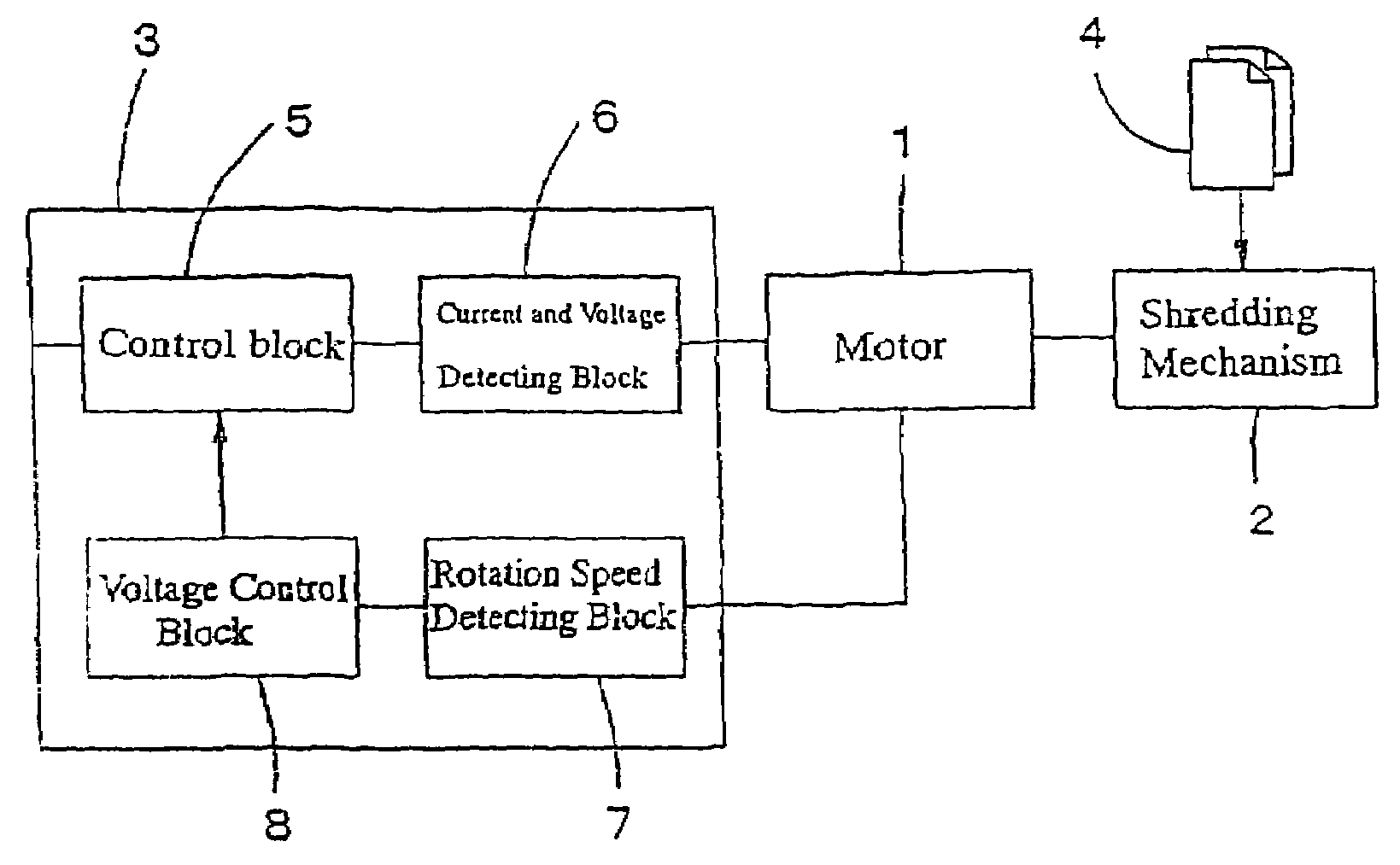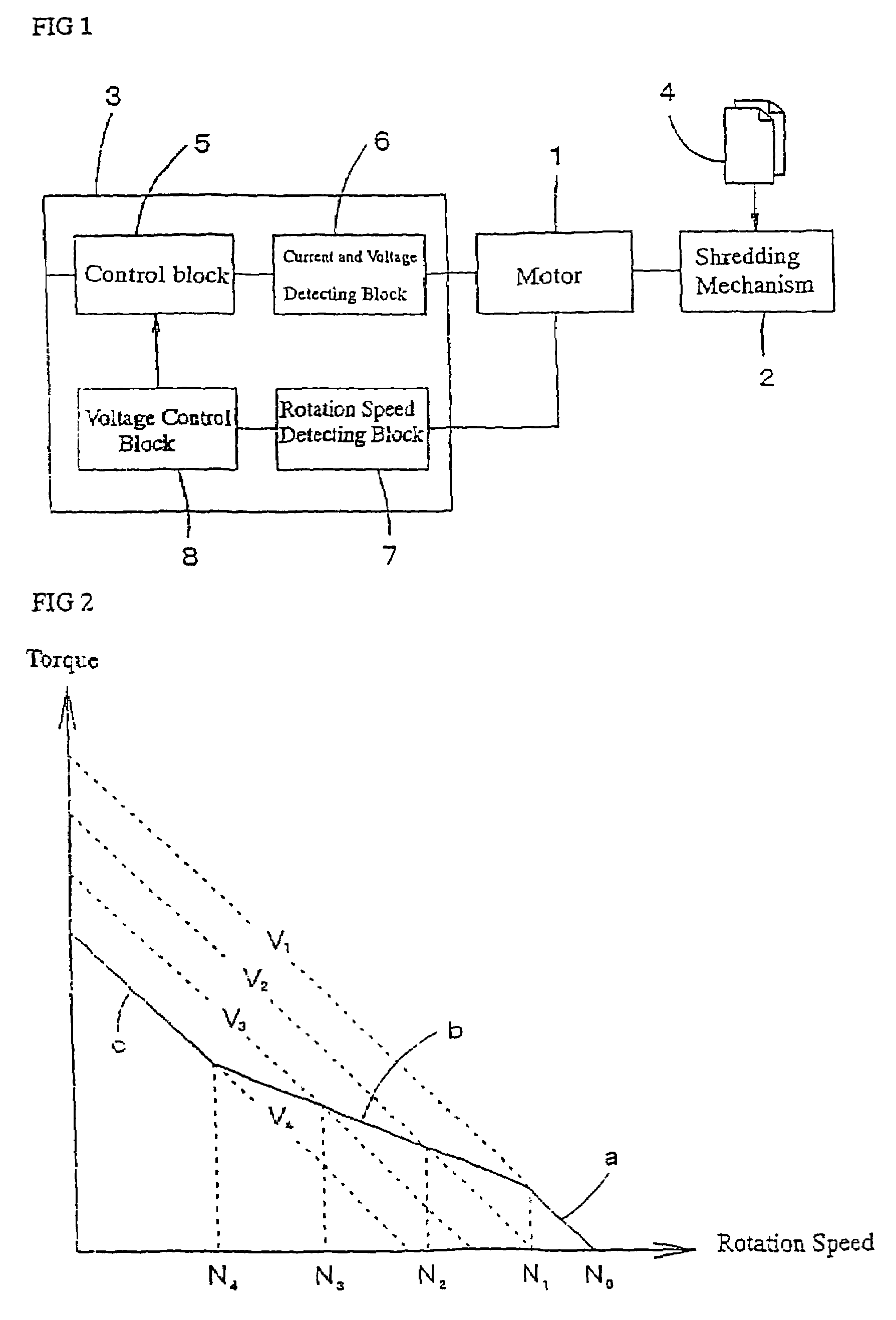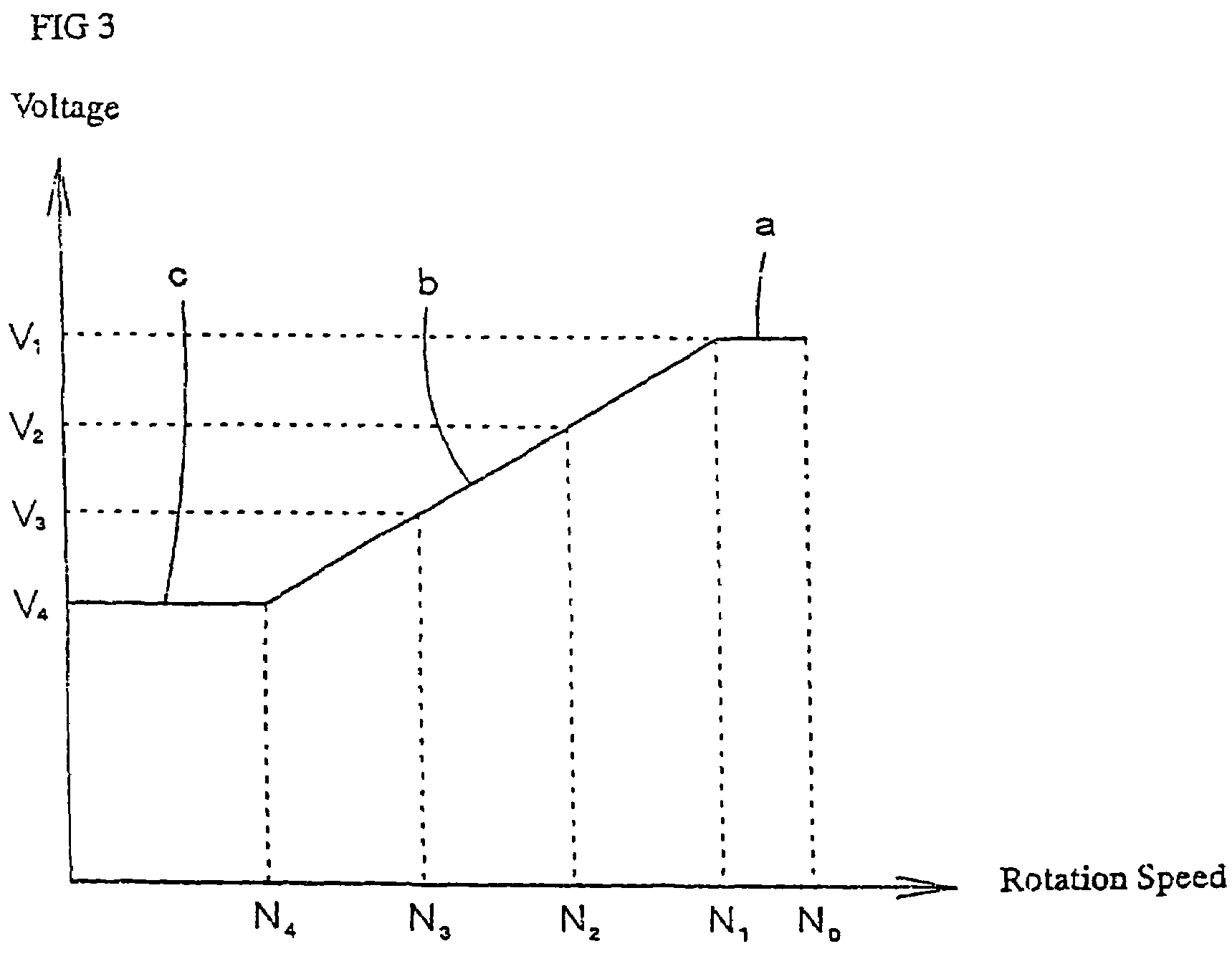Motor control circuit for paper shredders
a motor control circuit and paper shredder technology, applied in the field of paper shredders, can solve the problems of increasing power consumption, increasing load, and increasing power consumption, and achieve the effects of enhancing shredding efficiency, reducing power consumption, and advancing energy saving
- Summary
- Abstract
- Description
- Claims
- Application Information
AI Technical Summary
Benefits of technology
Problems solved by technology
Method used
Image
Examples
Embodiment Construction
[0016]Hereinafter, preferred embodiments are discussed referring to attached drawings. FIG. 1 is one of preferable embodiments of a control circuit in the present invention. 1 is a motor for driving a rotary cutter in a paper shredder machine. In this embodiment, rotation speed and torque have an inversed linear correlation with each other if a voltage is a certain level. For example, a direct current brushless motor with a built-in magnetic sensor for detecting rotation speed of the motor can be adapted. 2 is a shredding mechanism having said rotary cutter therewithin, 3 is a control circuit for controlling On-Off or obverse-reverse rotation of said motor, and 4 is a paper to be shredded. A detailed block for said control circuit 3 is composed of a control block 5, a current and voltage detecting block 6, a rotation speed detecting block 7, and a voltage control block 8. In this block, said current and voltage detecting block constantly detects a current flow or a voltage for preve...
PUM
 Login to View More
Login to View More Abstract
Description
Claims
Application Information
 Login to View More
Login to View More - R&D
- Intellectual Property
- Life Sciences
- Materials
- Tech Scout
- Unparalleled Data Quality
- Higher Quality Content
- 60% Fewer Hallucinations
Browse by: Latest US Patents, China's latest patents, Technical Efficacy Thesaurus, Application Domain, Technology Topic, Popular Technical Reports.
© 2025 PatSnap. All rights reserved.Legal|Privacy policy|Modern Slavery Act Transparency Statement|Sitemap|About US| Contact US: help@patsnap.com



